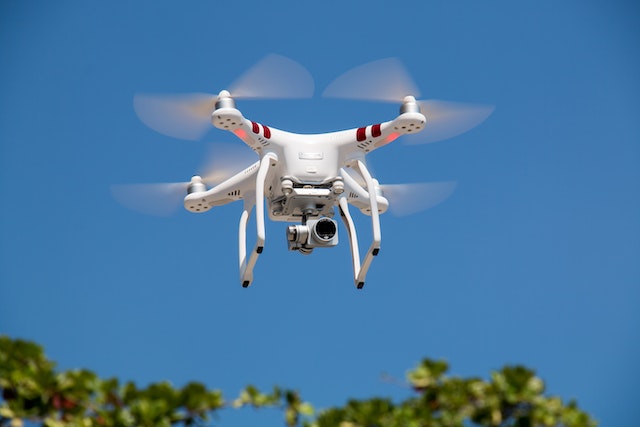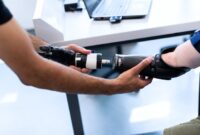Photography has always been a medium through which we can capture and immortalize moments in time. From the early days of black-and-white film to the modern digital age, photographers have pushed the boundaries of what is possible. One of the most exciting developments in recent years has been the rise of aerial photography. By taking to the skies, photographers are able to capture stunning perspectives and unlock a whole new world of creative possibilities. In this article, we will explore the art of aerial photography, from the equipment and techniques to legal considerations and post-processing tips.

Understanding Aerial Photography
What is aerial photography?
Aerial photography is the art of capturing images from an elevated perspective. Traditionally, this was achieved by using helicopters or airplanes equipped with cameras. However, the advent of drones has made aerial photography more accessible than ever before. By using remotely piloted aircraft, photographers can now capture breathtaking images from perspectives that were once only possible for professionals with expensive equipment.
Benefits of aerial photography
The primary benefit of aerial photography is the unique perspective it provides. By capturing images from above, photographers can showcase landscapes, cityscapes, and subjects in a way that is not possible from the ground. Aerial photography allows for a fresh and captivating viewpoint, offering a new level of depth and context to the images. It also enables photographers to highlight patterns, shapes, and colors that may not be immediately apparent from a traditional viewpoint.
Equipment and Techniques for Aerial Photography
Drones
Drones have revolutionized aerial photography. These small, unmanned aircraft are equipped with high-resolution cameras that can capture stunning images and videos. They are lightweight, portable, and offer precise control, allowing photographers to navigate and frame their shots with ease. Additionally, many drones come with intelligent flight modes and obstacle avoidance systems, further enhancing the capabilities and safety of aerial photography.
Helicopters and airplanes
While drones have become the go-to choice for most aerial photographers, traditional methods using helicopters and airplanes still have their place. These options offer the advantage of higher altitudes and longer flight times, making them ideal for capturing vast landscapes or covering larger events. However, they require more resources, including trained pilots and specialized equipment, which can limit their accessibility for some photographers.
Camera settings and stabilization
When it comes to camera settings for aerial photography, there are a few key considerations. Firstly, using a fast shutter speed is crucial to avoid motion blur caused by the movement of the aircraft. Secondly, a small aperture helps maintain a large depth of field, ensuring that both the foreground and background are in focus. Finally, adjusting the ISO sensitivity allows for optimal exposure control.
To counteract the vibrations and movements during flight, stabilization techniques are vital. Many drones and camera systems come equipped with built-in stabilization technology to minimize blur and ensure sharp images. For photographers using helicopters or airplanes, gyroscopic gimbals or specialized camera mounts can be employed to achieve similar results.
Composition and framing
Composition plays a significant role in creating compelling aerial photographs. As with any form of photography, the rule of thirds is a useful guideline to follow. By placing points of interest along the intersecting lines or at their intersections, you can create a visually balanced and engaging composition. Additionally, incorporating leading lines, patterns, and unique angles can add a dynamic element to your aerial shots.
When framing your shots, it’s essential to consider the foreground, middle ground, and background elements. Including recognizable landmarks or objects in the foreground can provide a sense of scale and context to the overall image. Experimenting with different angles and perspectives can also help create more visually striking compositions.
Legal and Safety Considerations
Drone regulations
As the popularity of drones continues to grow, regulations have been put in place to ensure safety and privacy. It is crucial for aerial photographers to be aware of the laws and guidelines in their country or region. These regulations often include restrictions on flight altitudes, no-fly zones (such as airports or government facilities), and privacy concerns when photographing people or private property. Familiarizing yourself with these regulations and obtaining any necessary permits or licenses is essential for responsible aerial photography.
Flight restrictions and permits
In addition to drone regulations, there may be specific flight restrictions or permits required for certain areas. National parks, wildlife reserves, or sensitive locations may have additional rules governing aerial photography. It is important to research and adhere to these restrictions to protect the environment and respect the privacy of others. Some locations may require you to apply for permits in advance, so proper planning and preparation are key.
Safety precautions
Safety should always be a top priority when engaging in aerial photography. Before taking flight, it is essential to perform pre-flight checks on your equipment to ensure everything is in working order. Checking weather conditions and wind speeds is crucial, as strong gusts can affect the stability and control of the aircraft. Maintaining a safe distance from people, buildings, and other potential obstacles is necessary to prevent accidents or damage. Finally, having insurance coverage for your equipment and liability is highly recommended.
Capturing Stunning Aerial Shots
Planning and scouting locations
Before setting out on an aerial photography shoot, thorough planning and location scouting are essential. Researching the area and identifying potential points of interest will help you make the most of your flight time. By using tools such as Google Earth or specialized drone apps, you can get an overview of the terrain and identify interesting features or compositions.
Weather conditions
Weather conditions have a significant impact on aerial photography. Clear skies with good visibility are generally preferred, as they allow for sharp and vibrant images. However, some photographers also find beauty in moody or dramatic weather conditions, such as clouds, fog, or rain. It’s important to assess the weather forecast and make an informed decision based on your desired aesthetic and safety considerations.
Choosing the right time of day
The time of day can greatly affect the quality of your aerial photographs. The golden hours, which are the first and last hours of sunlight, are renowned for their warm and soft light. During these times, the sun is lower in the sky, creating long shadows and adding depth to your images. However, depending on the subject and desired effect, other times of the day, such as midday or twilight, may also yield stunning results. Experimenting with different lighting conditions can offer a range of creative possibilities.
Utilizing different perspectives and angles
One of the unique advantages of aerial photography is the ability to capture images from various perspectives and angles. By adjusting the altitude, distance, and angle of your camera, you can create different compositions and visual effects. Low-altitude flights can provide intimate and detailed shots, while higher altitudes offer a broader view of the surroundings. Experimenting with different angles, such as top-down, diagonal, or oblique, can add visual interest and enhance the overall composition.
Post-Processing Tips for Aerial Photography
Editing software and tools
Post-processing plays a vital role in enhancing and refining your aerial photographs. There are numerous software options available, ranging from beginner-friendly to professional-grade tools. Adobe Lightroom and Adobe Photoshop are popular choices among photographers, offering a wide range of editing capabilities and advanced features. Additionally, specialized drone software, such as DJI’s editing app, can streamline the editing process and provide optimized presets specifically designed for aerial photography.
Enhancing colors and contrast
Aerial photographs can benefit from color enhancements to bring out the vibrancy and beauty of the scene. Adjusting the saturation, vibrance, and contrast can help make the colors pop and create a more visually striking image. However, it’s important to strike a balance and avoid over-saturating or exaggerating the colors, as it can result in an unrealistic and unnatural look.
Removing unwanted objects
In some cases, aerial photographs may contain unwanted objects or distractions that can detract from the overall composition. Post-processing tools, such as the clone stamp or content-aware fill, can be used to remove these elements seamlessly. It is important to exercise caution and ensure that any edits made are done subtly and in a way that maintains the integrity of the image.
Adding special effects
Post-processing opens up a world of creative possibilities, allowing you to add special effects or unique touches to your aerial photographs. Adding a vignette or adjusting the exposure selectively can draw the viewer’s attention to specific areas of the image. Experimenting with different filters, such as black and white conversions or split toning, can also create a distinct mood or atmosphere.
Applications of Aerial Photography
Real estate and property
Aerial photography has become an invaluable tool for real estate agents and property developers. By showcasing properties from a bird’s-eye view, potential buyers can gain a better understanding of the layout, surrounding landscape, and proximity to amenities. Aerial photographs can capture the grandeur of large estates or highlight unique features such as waterfront locations or expansive gardens.
Landscape and nature photography
Aerial photography has opened up new possibilities for landscape and nature photographers. From capturing vast mountain ranges to intricate patterns in the sand or water, aerial perspectives offer a fresh and awe-inspiring take on the natural world. Aerial shots can highlight the beauty of natural formations, such as canyons, waterfalls, or coastlines, in a way that is not possible from the ground.
Event coverage and sports
Aerial photography is increasingly being used to capture large-scale events and sporting competitions. From music festivals to marathons, aerial shots can showcase the magnitude and energy of these events. Additionally, drones equipped with high-resolution cameras and video capabilities can provide dynamic and immersive coverage of sports, such as surfing, skiing, or motor racing.
Film and cinematography
Aerial photography has become an indispensable tool in the world of filmmaking and cinematography. With the ability to capture sweeping establishing shots, chase scenes, or epic landscapes, aerial perspectives add a cinematic quality to films and videos. Drones, in particular, have revolutionized the way filmmakers approach aerial shots, offering cost-effective and versatile solutions that were previously only accessible to big-budget productions.
Inspiring Examples of Aerial Photography
Iconic aerial photographs
Throughout history, there have been iconic aerial photographs that have captivated audiences and become symbols of human ingenuity and beauty. Examples include Yann Arthus-Bertrand’s Earth from Above series, which showcases the stunning diversity and interconnectedness of our planet, and George Steinmetz’s aerial photographs of deserts and other remote locations.
Notable aerial photographers
Aerial photography has attracted many talented photographers who have pushed the boundaries of the art form. Alex MacLean, known for his aerial photographs of the American landscape, has captured the intersection of human development and the natural world. Similarly, Florian Ledoux’s aerial shots of Arctic wildlife and landscapes offer a unique and poignant perspective on the effects of climate change.
Showcasing different genres
Aerial photography transcends genres and can be applied to various fields of photography. From abstract compositions and minimalist aerial shots to architectural photography and urban landscapes, there are countless ways to express creativity and tell stories through aerial perspectives. Exploring different genres can help photographers develop their unique style and find new avenues for artistic expression.
Advancements in Aerial Photography
High-resolution cameras and sensors
Advancements in technology have led to the development of high-resolution cameras and sensors specifically designed for aerial photography. These cameras offer exceptional image quality, allowing photographers to capture even the smallest details from great heights. With higher megapixel counts and improved dynamic range, aerial photographers can push the boundaries of image quality and produce stunning, highly detailed photographs.
Automated flight modes
Many drones now come equipped with intelligent flight modes that automate certain aspects of aerial photography. Features such as active tracking, waypoint navigation, and panoramic modes enable photographers to focus more on composition and creative vision, rather than worrying about piloting the drone. These automated flight modes make aerial photography more accessible to beginners and offer advanced capabilities for experienced photographers.
AI-assisted editing tools
Artificial intelligence (AI) has also made its way into the field of aerial photography. AI-powered editing tools can analyze and enhance aerial photographs with impressive accuracy and efficiency. These tools can automatically adjust exposure, correct perspective distortion, and even remove unwanted objects or distractions. By harnessing the power of AI, photographers can streamline their post-processing workflow and achieve professional-quality results with ease.
Conclusion
Aerial photography offers a unique and captivating way to elevate your photography skills. By embracing the possibilities provided by drones, helicopters, or airplanes, photographers can unlock breathtaking perspectives and unlock new creative avenues. From capturing sweeping landscapes to highlighting the beauty of everyday scenes from above, aerial photography adds depth, context, and visual interest to your images. By mastering the equipment and techniques, understanding the legal and safety considerations, and exploring post-processing possibilities, you can take your photography to new heights.
FAQs
Can I use a regular camera for aerial photography?
Yes, you can use a regular camera for aerial photography. While dedicated drones or aircraft offer specific advantages and stability, attaching a regular camera to a stabilized gimbal or using a window mount in an airplane or helicopter can also yield excellent results. It’s important to ensure the camera is securely mounted and that you have the necessary equipment to control the settings during flight.
Are there any special considerations for drone photography?
Yes, drone photography comes with specific considerations. It’s crucial to research and follow local regulations and obtain any necessary permits or licenses. Additionally, being mindful of privacy concerns and flying responsibly is important. It’s also advisable to practice in open spaces and become familiar with the controls and flight modes of your drone before attempting complex aerial photography.
How do I ensure my aerial photographs are sharp?
To ensure sharp aerial photographs, use a fast shutter speed to counteract motion blur caused by the movement of the aircraft. Additionally, using a small aperture and adjusting the ISO sensitivity can help maintain optimal exposure and depth of field. Investing in a drone or camera system with built-in stabilization technology can further enhance the sharpness of your images.
What are the advantages of aerial photography in real estate?
Aerial photography provides a unique perspective for real estate marketing. It allows potential buyers to get a comprehensive view of the property, its surroundings, and its proximity to amenities. Aerial shots can showcase large estates, highlight unique features, and create an immersive experience that traditional ground-based photography may not capture.
How can I make my aerial photographs stand out?
To make your aerial photographs stand out, focus on composition and capturing unique perspectives. Experiment with different angles, heights, and lighting conditions. Incorporate leading lines, patterns, and recognizable landmarks to create visually striking compositions. Post-processing can also play a role in enhancing colors, removing distractions, and adding creative effects to make your aerial photographs truly captivating.


